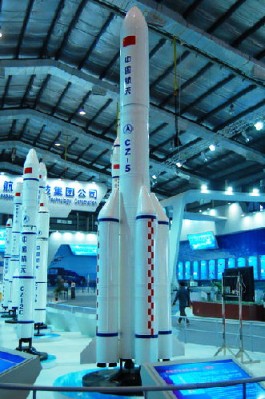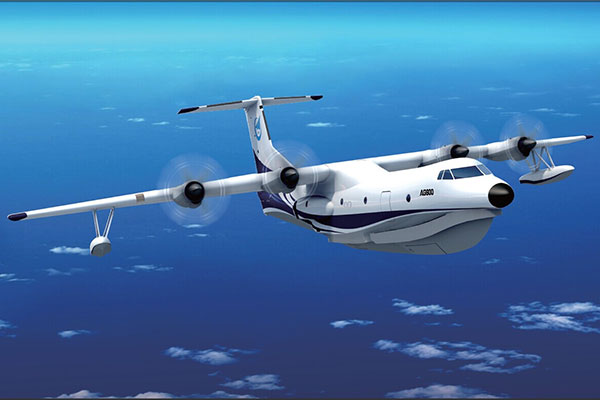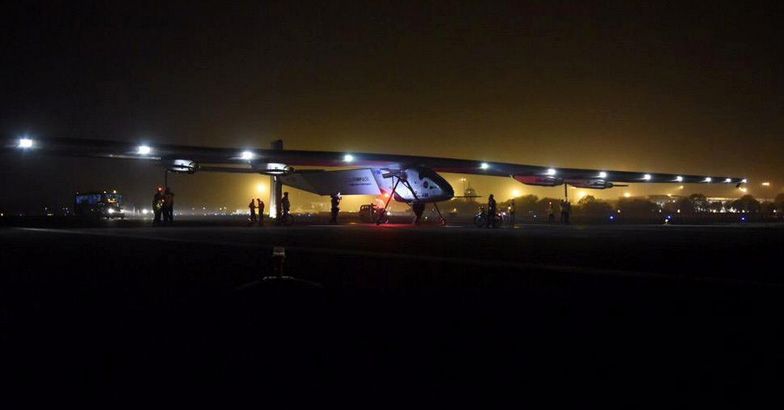
A replica of the most advanced and powerful Long March 5 rocket, presently under development. It is planned to be flight tested next year using the new 120-ton-thrust engine.
BEIJING (PTI): China will soon conduct the first flight of its new generation 'Long March' space launch vehicle fired by newly developed 120 ton engine in a bid to tap the growing international commercial satellite market.
"A launch of the Long March 6 is planned in the middle of the year and it will use the newly developed 120-ton-thrust engine as its main propulsion," Tan Yonghua, president of China's Academy of Aerospace Propulsion Technology said.
"The Long March 7 and our most powerful rocket, the Long March 5, will make their first flights next year and they will also use the new engine," Tan, a deputy of the National People's Congress (NPC), told state-run China Daily on the sidelines of its session.
The academy, China's leading developer of the liquid-fuelled rocket engine, forms part of China Aerospace Science and Technology Corp, the major contractor for the country's space activities.
China is making huge investments in its space programme, making it a key strategic industry next to defence.
Besides making preparations to land and return voyage to Moon, China is currently in the process of building its space station which is expected to be ready by 2020.
The station required rockets to lift large cargo.
Tan said that despite China having made huge strides in rocket development, it still lags behind the US and Russia.
"We need to catch up with them in terms of materials, manufacturing techniques and heavy-lift engines."
The Long March 6 is a high-speed response launch vehicle capable of placing a payload of about 1 metric ton into a sun-synchronous orbit at a height of 700 km.
The new engine, which has been developed by the academy since 2000, will use liquid oxygen and kerosene as its propellants, meaning it is much more eco-friendly than current engines, Tan said.
With the new engine, the Long March 5 will have a payload capacity of 25 metric tons for low Earth orbits, or 14 tons for geostationary transfer orbits.
The Long March 7 will be capable of sending payloads of 13.5 tons into low Earth orbits and of 5.5 tons into sun-synchronous orbits, Tan said.
He added that the new engine has a thrust that is 60 per cent greater than current ones and can carry a payload 2.5 times larger than its predecessors.
An astronautics researcher close to the nation's space programme said China Aerospace Science and Technology Corp developed the Long March 6 in an attempt to gain more foreign contracts for launching lightweight satellites.
"Many satellites weighing less than 1 ton are soon expected to enter service, so the rocket doesn't need to have a heavy payload capacity," the Daily quoted a researcher.
"The Long March 6 will fill the gap in our rocket family," he added.
 Previous Article
Previous Article Next Article
Next Article













The Indian Air Force, in its flight trials evaluation report submitted before the Defence Ministry l..
view articleAn insight into the Medium Multi-Role Combat Aircraft competition...
view articleSky enthusiasts can now spot the International Space Station (ISS) commanded by Indian-American astr..
view article